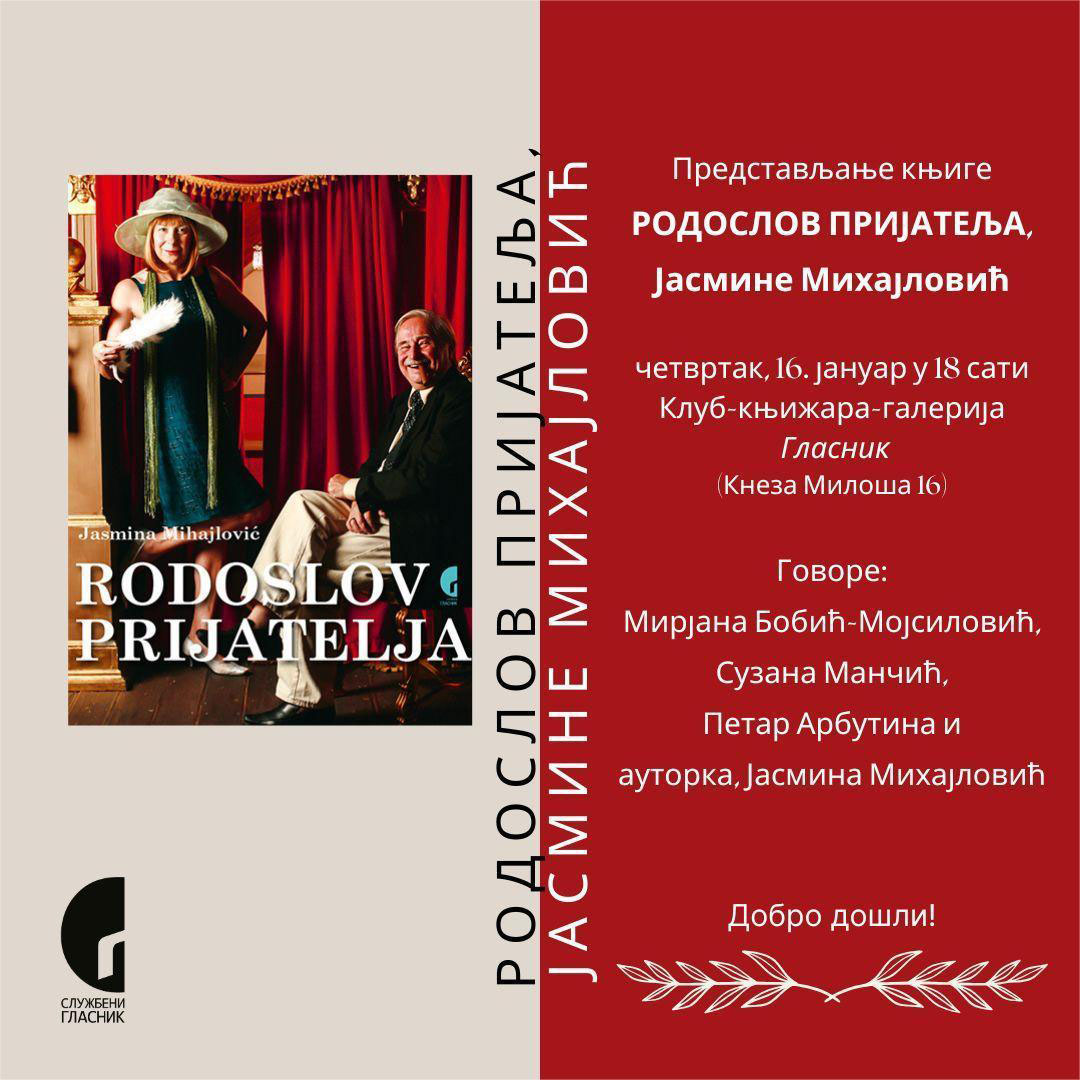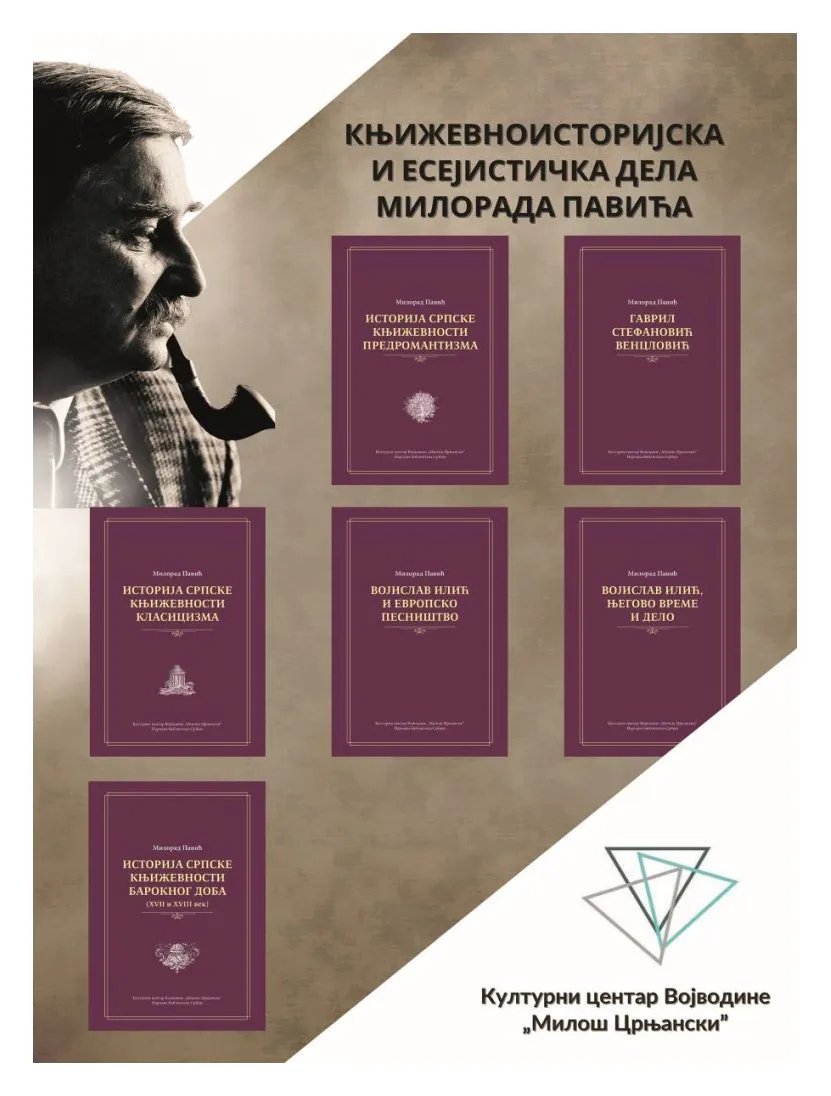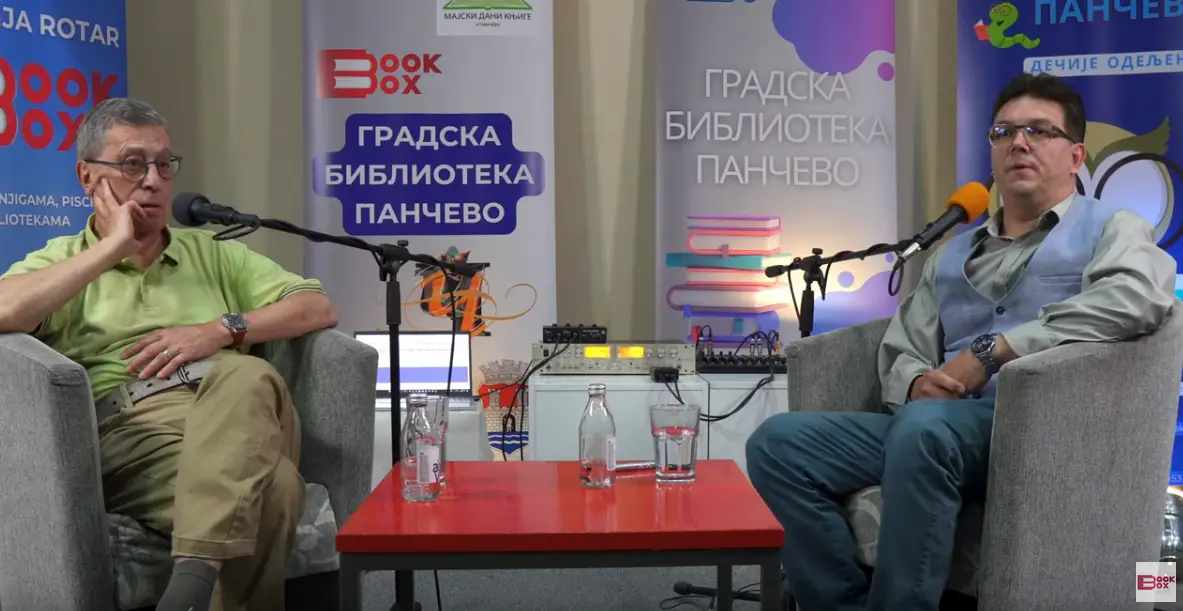For ever and a Day. A Theatre Menu.
Original title: Za uvek i dan više. Pozorišni jelovnik
Basic book data
First edition: Belgrade, Dereta, 1993, 134 pages.
-
Вечность и еще один день. Меню для театрального ужина (For Ever and a Day – a play)
Иностранная литература, No 3, 1991. -
A Theater Menu For Ever and a Day Dereta, Belgrade, 1997.
Forever And a Day [Kindle Edition e-book], Amazon.com, Kindle Store, 2012. -
For alltid och en dag (For Ever and a Day – a play)
Monitor Forlaget, Kristianstad 1994.
-
Για πάντα και μια μέρα παραπάνω (For Ever and a Day – a play)
ΕΣΤΙΑΣ, ΑΘΗΝΑ, 1998.
In Theatre
So far, the dramatizations based on Milorad Pavic’s novel A Theater Menu For Ever and a Day were staged in various theaters in Russia, Macedonia, Bulgaria and Republika Srpska.
The Moscow Theatre MHAT, established by Stanislawski and famous for Chekhov plays, has prepared for the stage The Theatre Menu by Milorad Pavić, directed by Vladimir Petrov and translated by Natalia Vagapova. World premiere was on April 21, 2002.
5 performances in Russia, Macedonia, Bulgaria and Republika Srpska.
-
Forever and a Day – Chamber theatre of city of Voronezh, directed by Michail Bichov, 2000 – Voronezh
-
Forever and a Day – Moscow art theatre Chekhov (MHAT), directed by Vladimir Petrov, 2002 – Moscow
-
Forever and a Day – Nacional Theatre Bitola (Macedonia), directed by Martin Kochovski, 2004 – Bitola (Macedonia)
-
Forever and a Day (Завинаги и още един ден) – Rhodopean Drama Theatre „Nikolay Haytov“ directed by Krasimir Rankov, 2006 – Sofia (Bulgaria)
-
Petkutin i Kalina (Play Pavich) (Forever and a Day) – Theatre Prijedor, directed an adaptation by Gradimir Gojer, May 2011 – Prijedor (Bosnia and Herzegovina – Republika Srpska)
Overview
With more than ten different settings spread over at least four distinct time periods, Forever and a Day is a truly grand piece of contemporary dramatic literature. Our production will capitalize on the presence of the actor, sophisticated costumes, and precise lighting design to create razor sharp imaginary worlds. Only the minimal necessary elements of set and props will be constructed in order to bring the audience into our collectively imagined worlds.
The onus of discovering, sharing and ultimately inhabiting these worlds lays with the ensemble of twelve actors. Though the reader of the script may glimpse the interconnectedness of the “menu,” each audience, seeing only one combination of the nine possibilities, has but one experience of the journey, or meal. By rehearsing and presenting all nine versions of the play, the ensemble will bring the consciousness of all to the performance of each.
*
Such a play could indeed be compared with a menu. Just as food menus usually offer several starters, one or more main courses, and a choice of desserts at the end, with the customer composing his dinner according to his own taste, so the play For Ever and a Day offers something like a 'theatre menu'. True to this idea, the author suggests a menu-like structure for the play, 3+1+3: three interchangeable "starters," one "main course," and three interchangeable "desserts" to conclude. The spectator, director, or theater manager can thus choose any one of the three introductory sections as an appetizer and any one of the three conclusions as an ending for the play. But he should never take more than one "starter" or more than one "dessert" with the same entree.
*
For Ever and a Day, is a love story that comes with a menu from which the audience, actors, or director can choose one of three beginnings and one of three endings (one befitting a tragedy, one a comedy, and one an ecological tract)
Milorad Pavić
In 1993 I thought up a hyperplay in the form of a theatre menu – For Ever and a Day in which the viewer, as in an inn, can choose his own meal and compose it choosing between 9 different versions of the play, which has three starters, one main course and three desserts.
The author suggests a menu-like structure for the play - three interchangeable starters, one main course and three interchangeable desserts to conclude. The theatre manager, director, or spectator can choose which of the nine possible versions they want. The play can have either a tragic, a happy or an ecological ending.
Reviews
Jasmina Mihajlović, The Review of Contemporary Fiction
Pavic's play, For Ever and a Day is subtitled A Theater Menu (here I would like to remind the reader that the word menu in computer terminology already points to the possibility of a choice). It is composed so that it has three interchangeable beginnings or Starters, three ends or Desserts, and a central part or Main Course around which these beginnings and endings rotate, thus forming different links with them and among themselves. They can be combined into at least nine different versions, each of them being a separate whole in itself. It is the responsibility of the reader-spectator or the theater director and the acting troupe to decide which of the variants they will choose and which ending to pick: the happy ending, the tragic ending, or the ecological ending. Perhaps we might say that For Ever and a Day is a hyperplay. It falls into that group of the texts that cannot be printed in a book in an adequate way because the mutual interchangeability of the beginnings, and the endings of the text cannot be represented without imposing a chronological order on it (for instance: Starter I, Starter II, etc.). The main characteristics of a hyperplay are kept by Pavic's drama even when it is transferred into the theater medium that, in this case, is already a simultaneous performance whether in the real space of one theater or different theaters, similar to the simulated space of the computer. Such a structure enables the spectator to see the same middle part in a new way many times because the opening sections (Starters) and closing sections (Desserts) realized through such a procedure always give a different meaning to the same central text.
Nadežda Obradović, University of Belgrade
In his note at the beginning of the play For Ever and a Day Milorad Pavic says: "Such a play could indeed be compared with a menu. Just as food menus usually offer several starters, one or more main courses, and a choice of desserts at the end, with the customer composing his dinner according to his own taste, so the play For Ever and a Day offers something like a 'theatre menu'." True to this idea, the author suggests a menu-like structure for the play, 3+1+3: three interchangeable "starters," one "main course," and three interchangeable "desserts" to conclude. The spectator, director, or theater manager can thus choose any one of the three introductory sections as an appetizer and any one of the three conclusions as an ending for the play. But he should never take more than one "starter" or more than one "dessert" with the same entree.
As appetizers, Pavic offers "Butterflies Pannes, sauce tartar," "Eggs a la Khazar," and "Fish in Antler Sauce." The main course is "Petkutin and Kalina." The dessert choices include "Candied Flowers," "Bitter Coffee," and "Apples." The three starters are very unlike, evolving in different locales and in different time periods: at a private party, in a Khazar monastery in the eighth century, and in "Sofia's castle somewhere other than Earth."
In "Petkutin and Kalina" we find ourselves in seventeenth-century Constantinople. Avram Brankovich, whose one son has died and the other gone off to war, makes a third son out of mud and water, reciting the Fortieth Psalm and breathing life into his creation. This new being, Petkutin, is quick to learn and master all human knowledge. Kalina, a young and marriageable girl of fifteen, falls in love with him at first sight and accepts his proposal of marriage, heedless of the matchmaker's warning that Petkutin is not human. As per custom, the newlyweds hold their wedding feast at an ancient theater, now fallen into ruin, the carved names of bygone spectators still visible on the seats. While preparing the food, Petkutin cuts himself, and Kalina cries at the sight of his blood. Immediately 120 shrieking and howling dead souls descend upon them from the audience. They pull Kalina apart, tearing her flesh to pieces, and she herself joins in devouring the uneaten remains of her own body. Now become a ghost, she can no longer recognize Petkutin, and he then kills himself. By his blood on her lips, Kalina again recognizes him and so devours him.
Following this grisly main course come the three dessert choices. In "Candied Flowers" Petkutin buys a special egg containing a day of the week, but instead of selecting an ugly day in the future, he prefers a day from the distant past (the seventeenth century); Kalina appears, and he promises her that they will stay together for ever and a day. In the two other desserts the stonecutters engraving Kalina's and Petkutin's names on their grave markers witness the appearance of each one's ghost.








